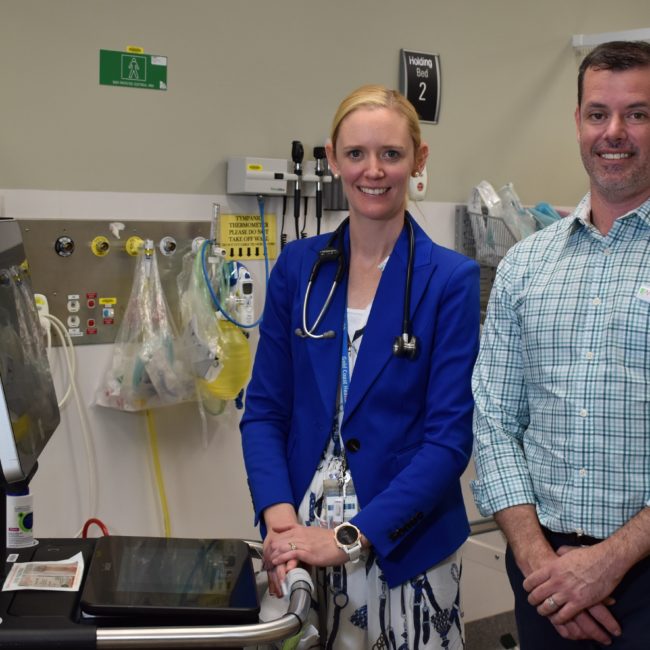Will a replicable ultrasound training intervention improve intravenous cannulation processes?
Grant ID: EMTR-201R26-2016
Project Summary
Most patients need intravenous access in the emergency department, but many suffer multiple attempts before the health provider is successful. This can cause patient distress and delays the time to potentially life-saving treatments. We believe an ultrasound-guided cannulation training program will enable better recognition of patients with difficult intravenous access and increase use of ultrasound during cannulation, hence decreasing time to cannulation, increasing success rates, and reducing the number of punctures required. In this study, we are examining the current practice of inserting intravenous (IV) cannulas in the Emergency Department at the Gold Coast University Hospital. We will consider how many people get cannulas, number of attempts required, who inserts them, how successful we are, how often ultrasound is used to guide this insertion, time to successful cannulation, who uses ultrasound and how successful is ultrasound-guided placement.
Outcomes
The clinicians ran a year long intervention program for emergency department doctors and nurses to improve knowledge and skills in identifying patients with difficult IV access and to learn ultrasound-guided cannulation. Almost 100 clinicians took part in ultrasound training and more than 1000 patients were involved in the research.
The research team found that the training program improved clinician confidence in using ultrasound to guide cannulation. However, clinicians were only turning to ultrasound after three or more attempts to place a cannula in a patient. Consequently, the research team recommended using ultrasound to guide cannulation earlier for difficult patients.
Ultrasound training is continuing for clinicians at the Gold Coast University Hospital Emergency Department and educational materials are being made available for patients.
IMPACT
Training program adopted across Gold Coast HealthDissemination
Archer-Jones, A., Sweeny, A., Schults, J.A., Rickard, C.M., Johnson, L., Gunter, A. and Watkins, S., 2020. Evaluating an ultrasound-guided peripheral intravenous cannulation training program for emergency clinicians: An Australian perspective. Australasian emergency care, 23(3), pp.151-156.
Archer‐Jones, A., Snelling, P.J. and Watkins, S., 2020. Establishing a hospital‐based ultrasound‐guided peripheral intravenous catheter training programme: A narrative of a 5‐year experience. Emergency Medicine Australasia, 32(6), pp.1080-1083.
Conferences:
- Archer-Jones, A., "Stop poking me! Placing new cannulas in the ED: Can ultrasound help?", Australasian college of Emergency Medicine (ACEM) Annual Scientific Meeting (ASM), Perth, 2019, November 18th-22nd.
- Archer-Jones, A.,"Training in ultrasound-guided vascular access: Is it effective? What are the barriers to its use?", Australasian college of Emergency Medicine (ACEM) Annual Scientific Meeting (ASM), Perth, 2019, November 18th-22nd.
Video/Presentations
Going to the hospital can be traumatic enough, let alone being repeatedly poked with a needle in the search for a vein. But new ultrasound technology is taking away the pain. @alexlewisjourno #7NEWS pic.twitter.com/ug4zIVi62Y
— 7NEWS Gold Coast (@7NewsGoldCoast) August 13, 2019
SHARE




